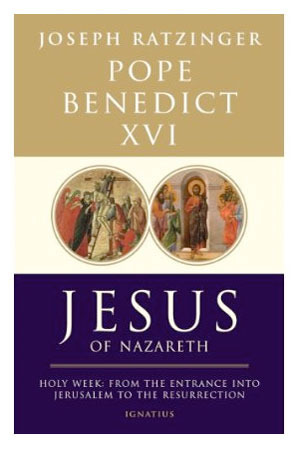"Benedict's style is never bombastic; it is always gentle and precise."
More good analysis and introductory observations from Dr. Jeff Mirus:
I have already noted that the great gift of Benedict's two volume study, Jesus of Nazareth, is his ability to teach us  something about the combination of intelligent investigation and deep faith which can enable us to open Scripture to our thirsty souls (see Ratzinger's Gift: Faith-Filled Exegesis). Now, having completed a close reading of the entire second volume, I'd like to offer a few more observations, in the hope that you'll read both books yourself.
something about the combination of intelligent investigation and deep faith which can enable us to open Scripture to our thirsty souls (see Ratzinger's Gift: Faith-Filled Exegesis). Now, having completed a close reading of the entire second volume, I'd like to offer a few more observations, in the hope that you'll read both books yourself.
First, immediately following my earlier remarks I entered into the chapter on the Last Supper (chapter 5), which could actually stand alone as a kind of proof of Benedict's great gift. In this chapter the Pope sets himself the task of shedding light on four exegetical difficulties which surround the Last Supper. He covers:
1. The problem of the Passover chronology (the Last Supper appears in some accounts to be a Passover meal but did not apparently take place on Passover);
2. The institution of the Eucharist (which embodies the idea of expiation from first to last, and so undermines later interpretive attempts to cast Jesus as either a "friendly rabbi" or a "revolutionary");
3. The theology of the words of institution (which suggest that God is now confronting evil directly because man is incapable of doing so);
4. The transition and connections between the Last Supper and the celebration of the Eucharist on Sunday (arising from Christ's command of commemoration and its association with the Resurrection).
After we leave these fascinating perplexities and developments behind, the book becomes more and more moving.
Read the entire essay, "A Crescendo of Understanding: Finishing Benedict's Second Volume", on CatholicCulture.org.
Carl E. Olson's Blog
- Carl E. Olson's profile
- 20 followers



